 |
|||||||||||||||
There were 12 pilots who flew the X-15, however, there were at least three others who might have joined those ranks of hypersonic pilots if history had unfolded just a little differently. |
||
— Iven C. Kincheloe, Jr. — |
||
Iven Kincheloe was originally chosen as the prime pilot of the X-15 for the US Air Force. Unfortunately, fate intervened and Kincheloe was killed in an F-104 accident on 26 Jul. 1958, less than three months before the scheduled rollout of the X-15. His backup was Robert White, who then became the new prime pilot for the US Air Force. |
||
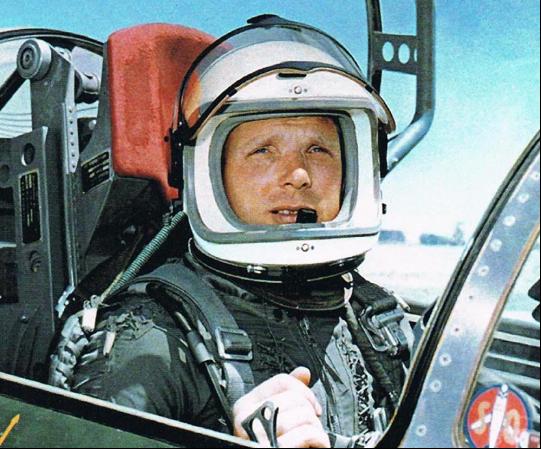 |
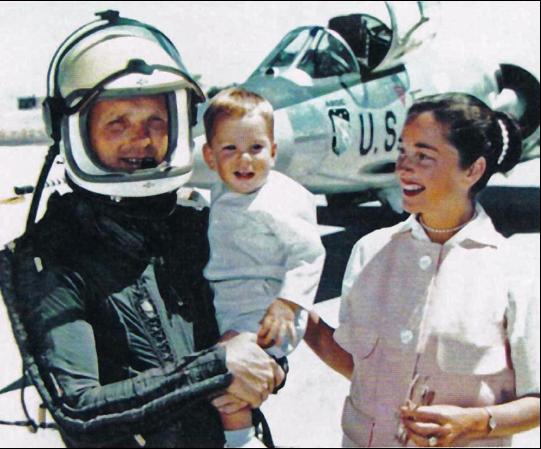 |
|||
Kincheloe in the cockpit of an F-104 Starfighter. He always used the nickname "Kinch." author's collection |
Iven C. Kincheloe, Jr. with his wife, Dorothy, ("Dottie") and his son, Iven III. author's collection |
|||
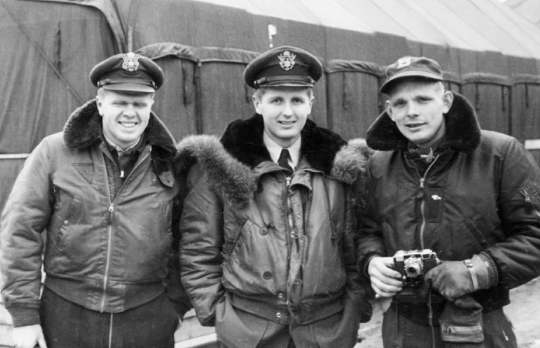 |
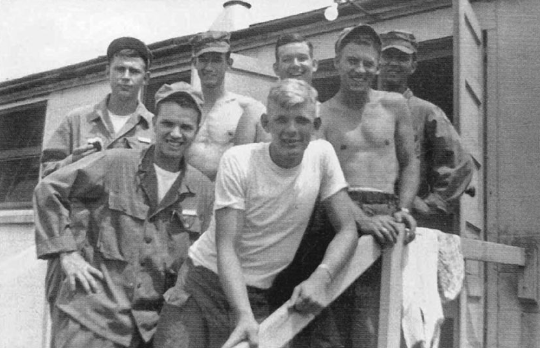 |
|||
Kinch with his buddies after he arrived in Korea. In the left photo he is on the right with a camera, and in the right photo he is wearing a t-shirt in the middle. author's collection |
||
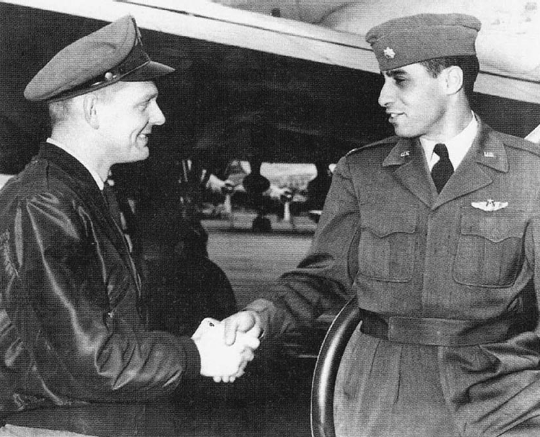 |
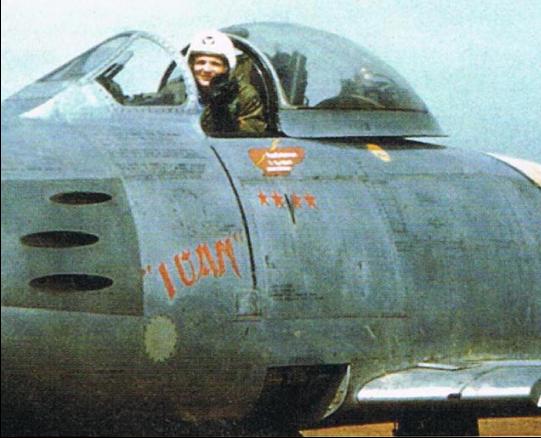 |
|||
Kinch was an air ace in the Korean War, with 5 confirmed MiG-15 shoot downs, along with a further 6 damaged. Here he shakes hands with fellow ace Maj. James Jabara. author's collection |
Kinch in the cockpit of his F-86 Sabre which he has nicknamed "Ivan" because of the number of Russian fighters he went up against in Korea. author's collection |
|||
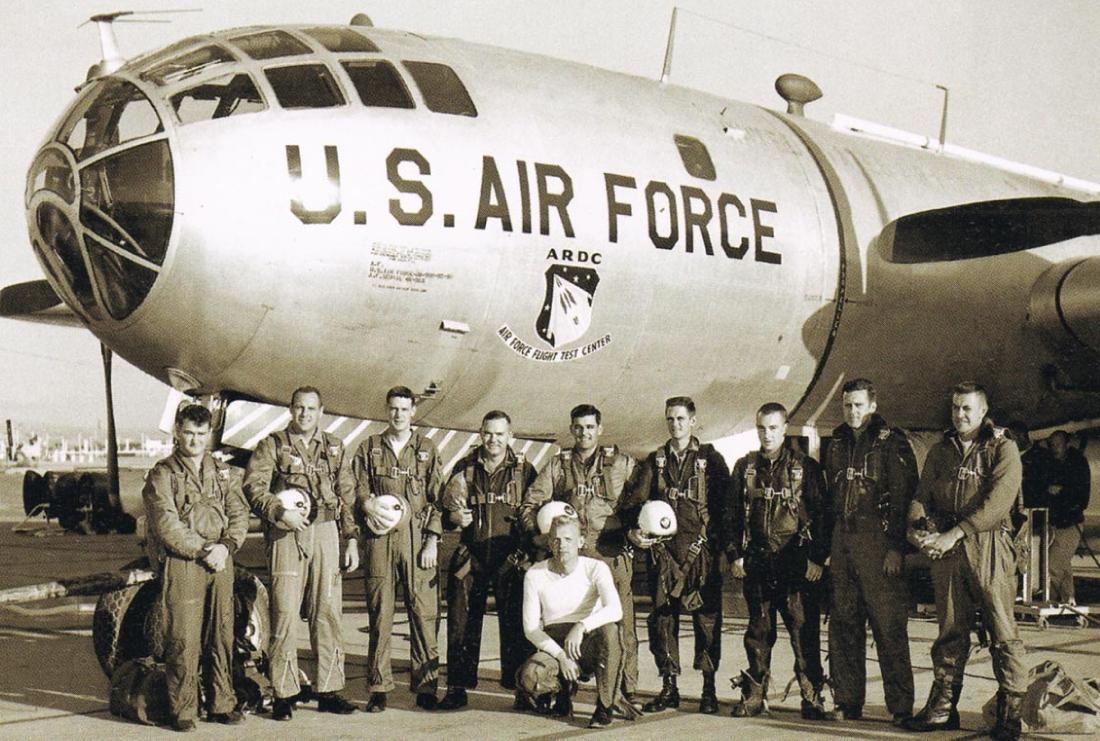 |
||
Prior to suiting up for an X-2 flight, Kinch poses with the crew of the EB-50 mothership that will take him aloft for launch on his research mission. Edwards History Office |
||
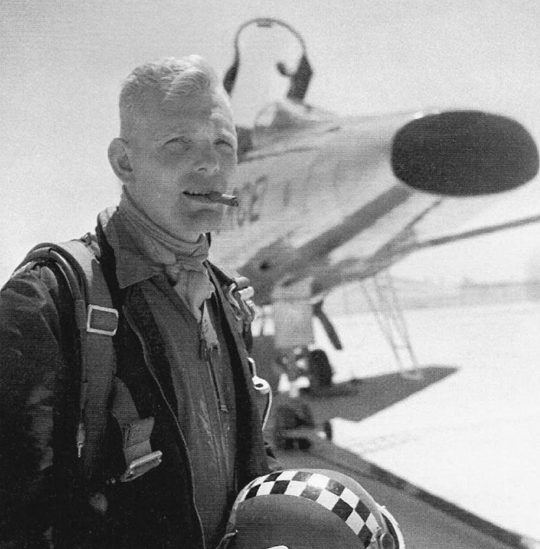 |
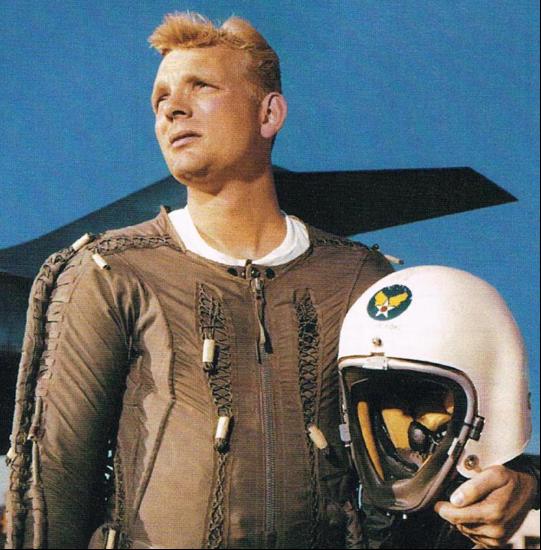 |
|||
Kinch chomping a cigar in front of an F-100 Super Sabre. author's collection |
A heroic pose, wearing a g-suit and holding the helmet he used for Bell X-2 missions. author's collection |
|||
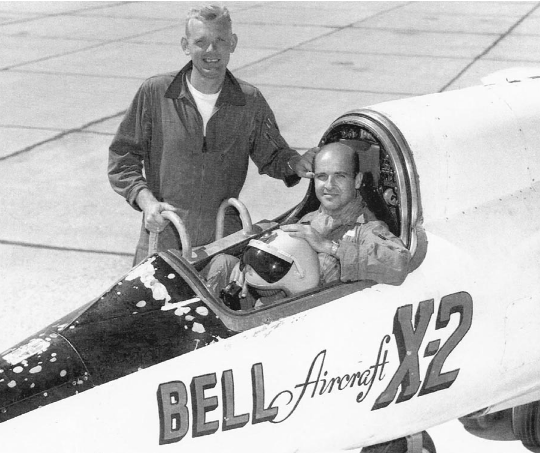 |
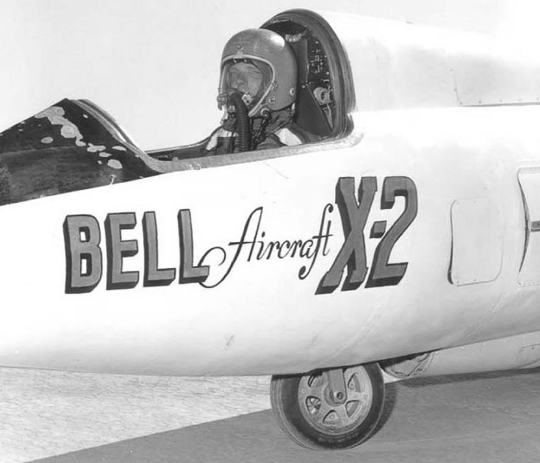 |
|||||
Kinch with Mel Apt in the cockpit of the X-2. On 27 Sep. 1956 this aircraft would take the life of Apt when he lost control after becoming the first pilot to exceed Mach 3. Edwards History Office |
||||||
Kinch's turn to sit in the X-2 cockpit for photos. Edwards History Office |
||||||
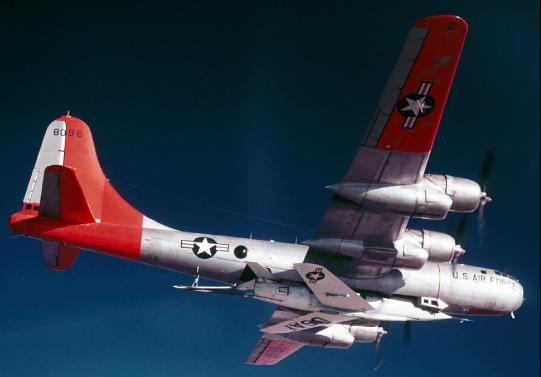 |
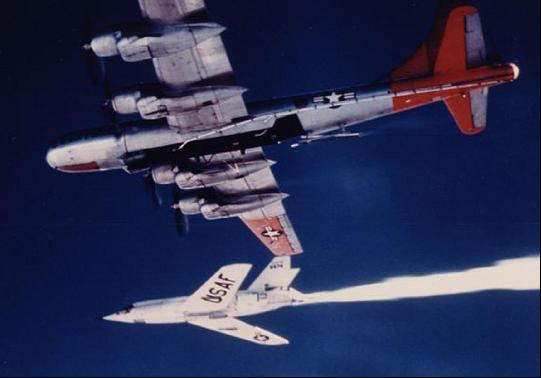 |
|||
The X-2 nestled in the bomb bay of the EB-50 mothership. Edwards History Office |
Moments after launch, Kinch lights the 2-chambered XLR-25-CW-1 rocket engine. Edwards History Office |
|||
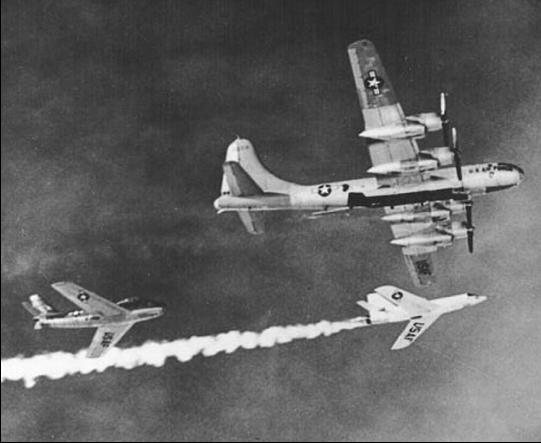 |
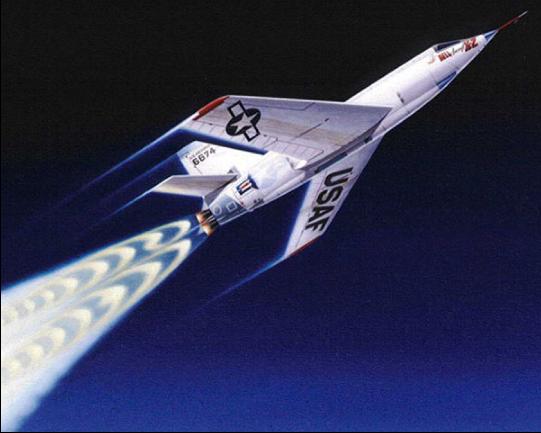 |
|||
On 7 Sep. 1956, Kinch received the nickname of "The First of the Spacemen" when he achieved a record altitude of 126,200 feet while flying at Mach 1.7 in the Bell X-2. art by Mike Machat |
||||
Another angle on the launch, with an F-86 chase plane close by. Edwards History Office |
||||
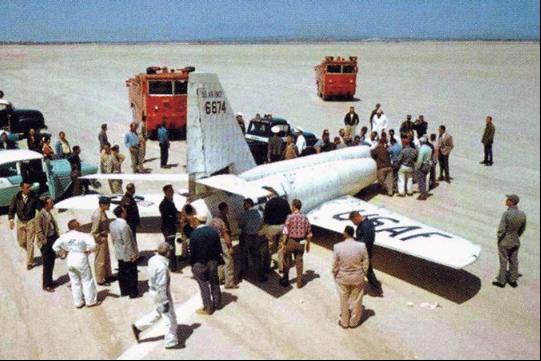 |
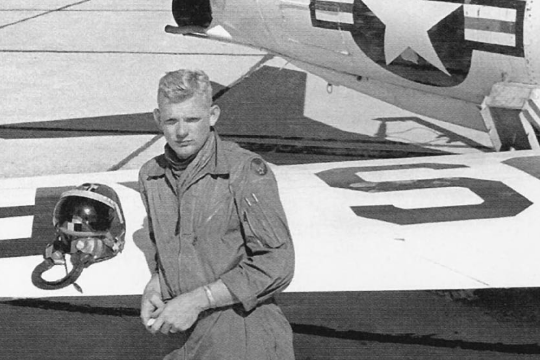 |
|||
Post landing on the Rogers lakebed at Edwards AFB, California. Edwards History Office |
"The First of the Spacemen" leans on the right wing of the X-2, helmet close at hand. Edwards History Office |
|||
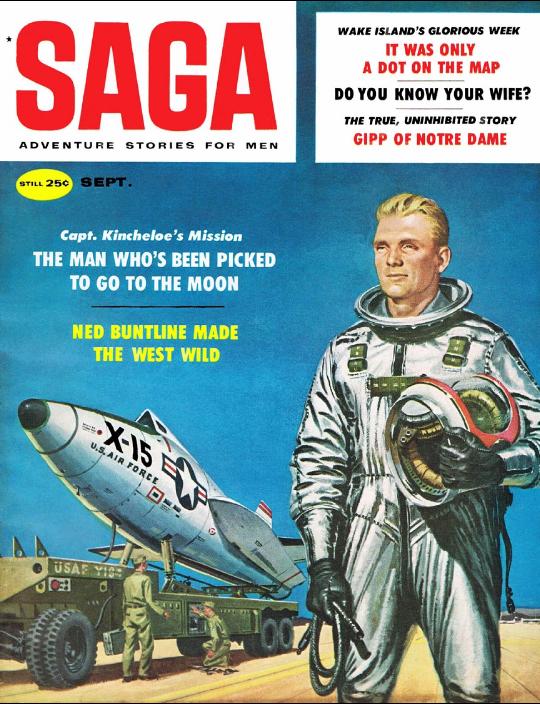 |
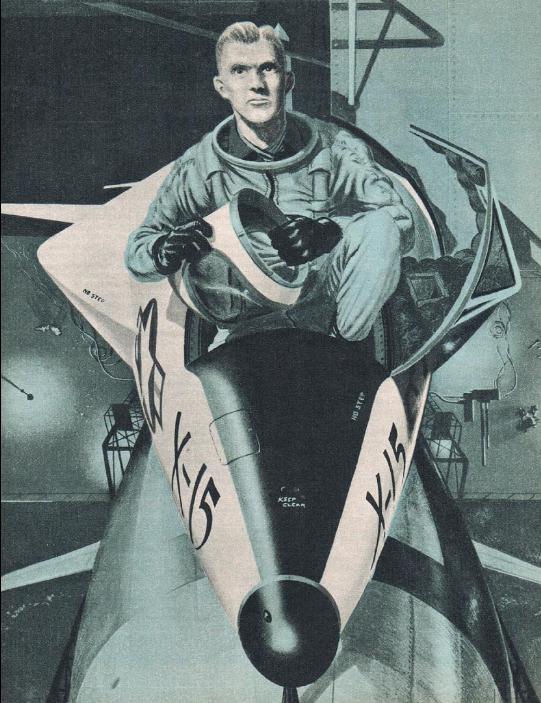 |
|||
Kincheloe was chosen as the prime pilot for the upcoming X-15 rocket plane research program by the US Air Force. Saga magazine ran an extensive article about Kinch in their September 1958 issue. Due to the vagaries of publication, the article appeared after Kinch died in an F-104 accident on 26 July. author's collection |
||
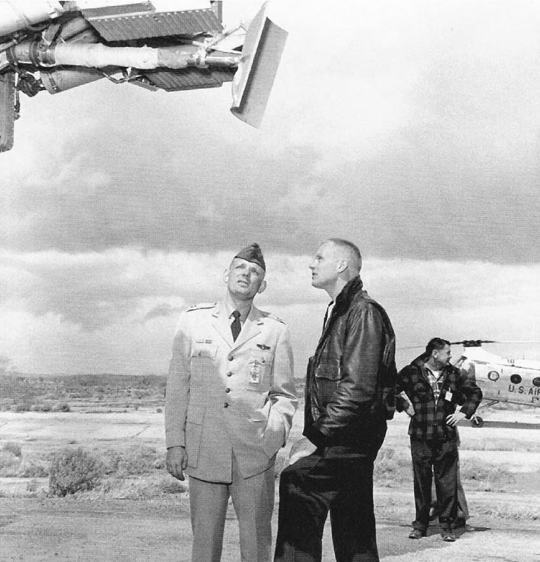 |
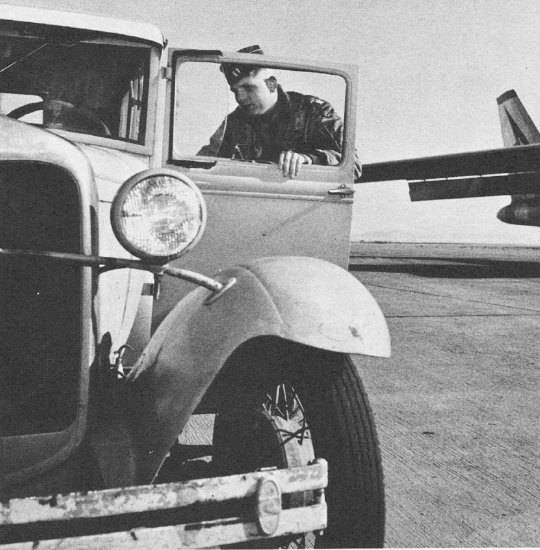 |
|||||
Kinch with his Model A Ford. This car was passed from one chief US Air Force test pilot at Edwards to the next. After the loss of Kincheloe in July 1958, the vehicle was passed down to his replacement on the X-15, Robert White. Edwards History Office |
||||||
Kinch, along with new NACA pilot Neil Armstrong, check out the X-15 ejection seat rocket sled test setup at the High-Speed Test Track. Armstrong Flight Research Center |
||||||
— Alvin S. White — |
||
Al White was a North American Aviation test pilot, and served as the backup pilot to Scott Crossfield on the X-15 test program. Scott accomplished 14 flights on the rocket plane, while White accomplished zero. Crossfield once jokingly said that Al was lying in wait to break his arm so he could get the chance to fly! Scotty was protective of "his" aircraft. Al nearly lost his life in the 8 Jun. 1966 crash of the XB-70A Valkyrie. |
||
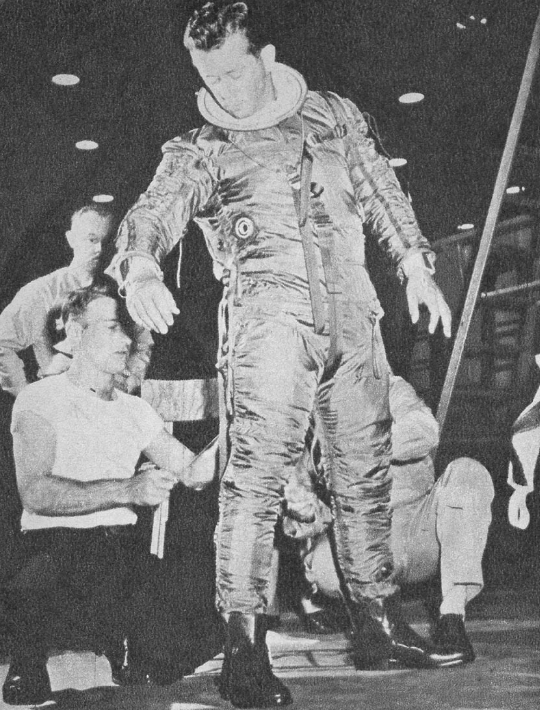 |
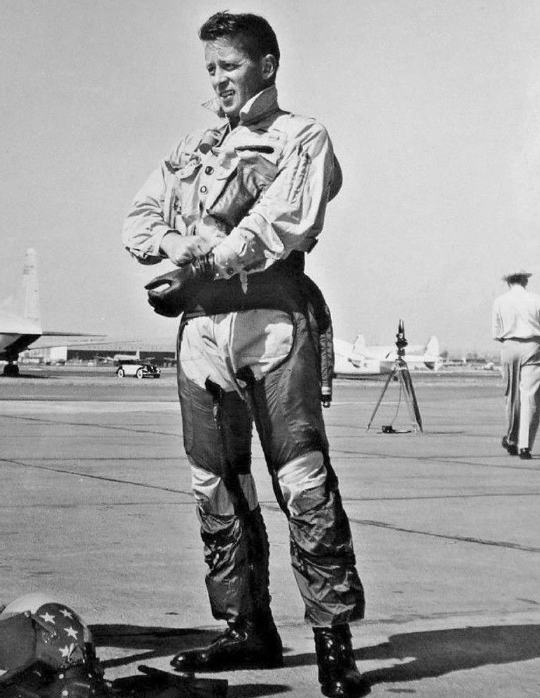 |
|||
The personification of a dashing fighter pilot. White is wearing g-pants that will keep blood from flowing away from his heart and head during high-g maneuvers. Alvin White collection |
||||
Al White gets a fit check in a David Clark MC-2 pressure suit for the X-15. North American Aviation |
||||
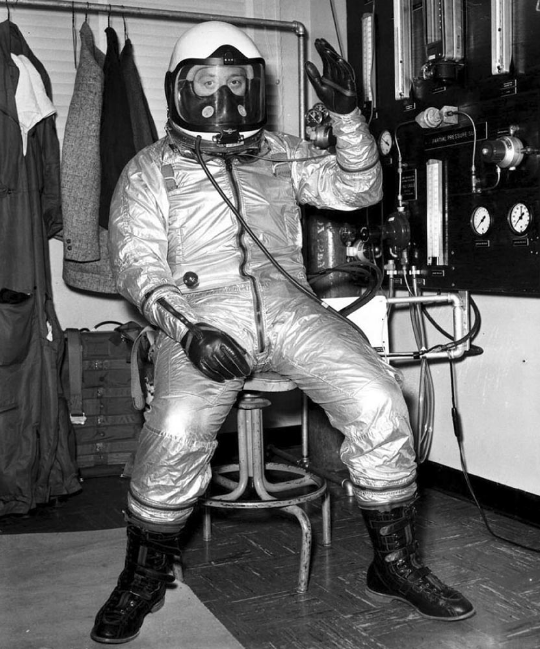 |
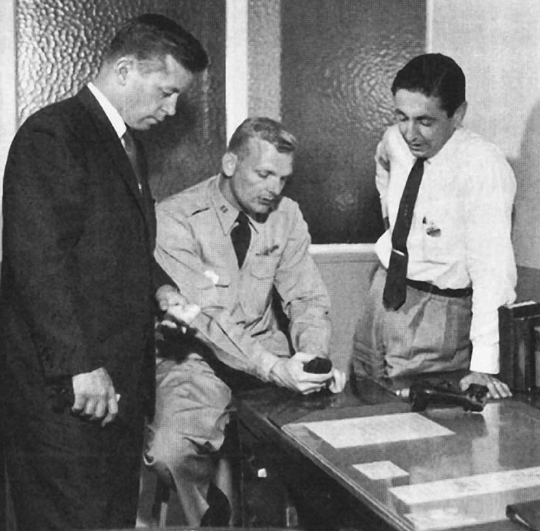 |
|||||
Al White (left) is seen here with North American Aviation X-15 prime pilot, Scott Crossfield (right), and Iven Kincheloe, prime pilot for the US Air Force (center). North American Aviation |
||||||
White undergoes a pressure check in the MC-2, which has been fully inflated. North American Aviation |
||||||
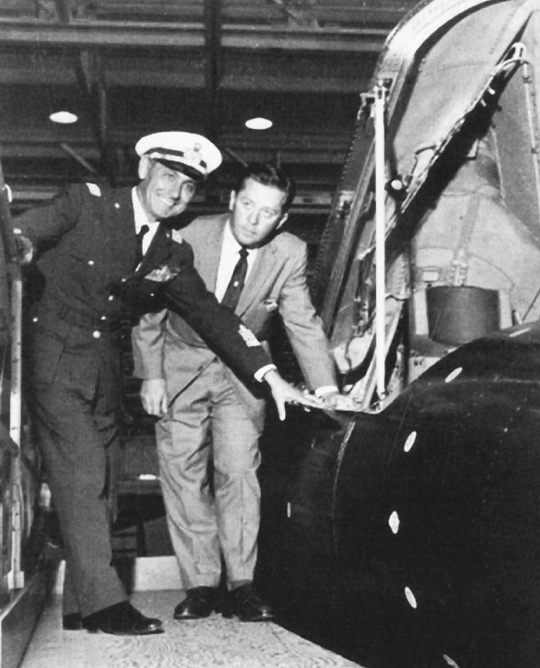 |
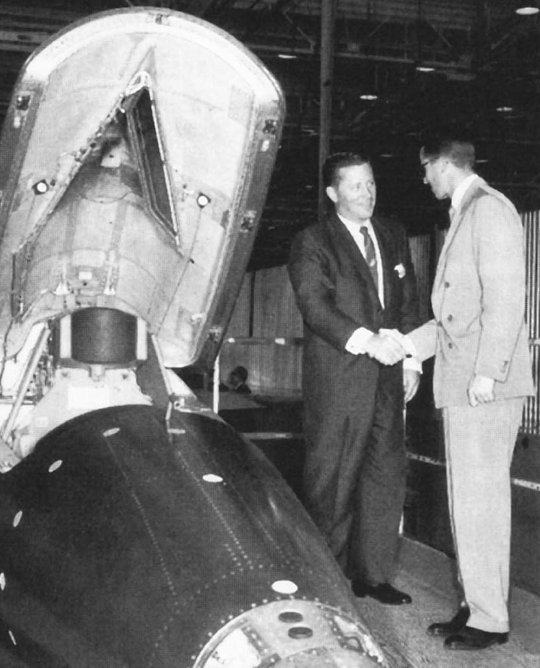 |
|||
Al White gives a tour of the X-15 to two visiting foreign dignitaries. At left, Al shows the X-15 cockpit to the Chief of Staff of the Italian Air Force, Gen. Silvio Napoli. At right, White shakes the hand of King Baudouin of Belgium. Alvin White collection |
||
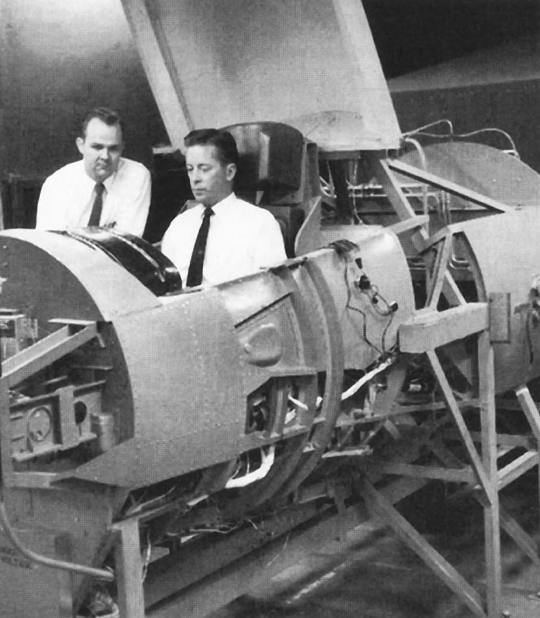 |
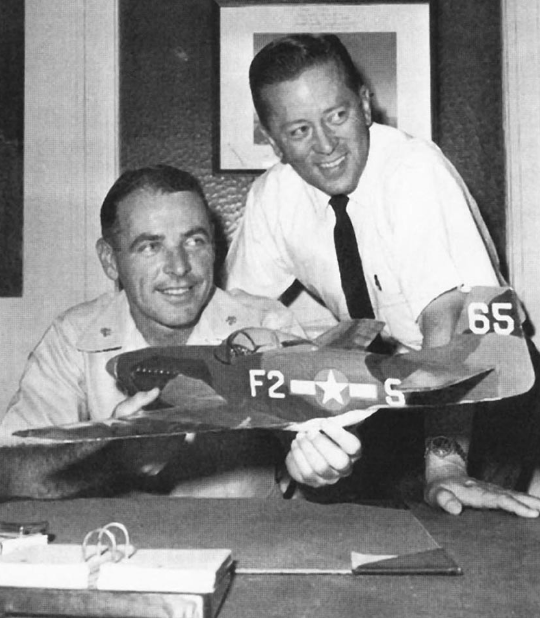 |
|||
White "flys" the X-15 simulator when it still resided at North American Aviation near Los Angeles International Airport. The simulator was nicknamed the "Iron Bird." Looking over White's shoulder is Al Guy, an NAA engineer. North American Aviation |
X-15 pilot Robert White (seated) with NAA backup X-15 pilot, Al White. Bob White is holding a large model of a P-51 Mustang, which he flew in World War 2. Bob was shot down near the end of the war, and served in a German POW camp. North American Aviation |
|||
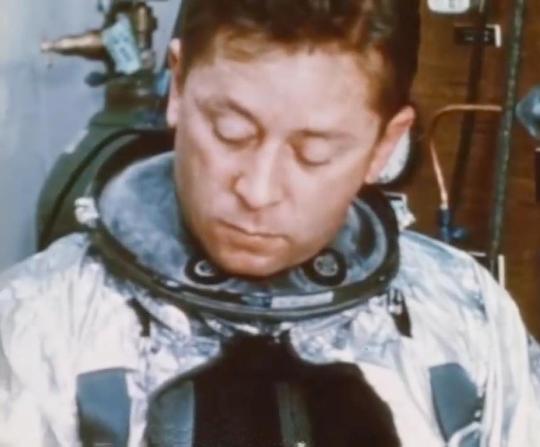 |
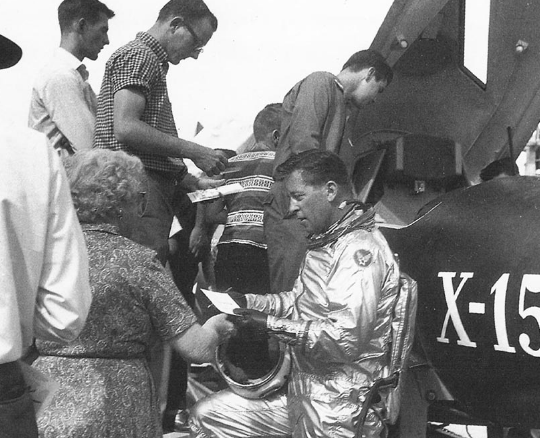 |
|||||
White represented North American and the X-15 at the World Congress of Flight in Las Vegas in April 1959. He is seen here signing autographs in front of an X-15 mockup. Alvin White collection |
||||||
A rare color image of Al White getting checked out in the MC-2 pressure suit. North American Aviation |
||||||
— John A. Manke — |
||
John Manke worked for NASA at the Flight Research Center as a research test pilot, flying nearly every type of lifting body, such as the M2-F3, HL-10, and X-24A and B. With his expertise as a rocket plane pilot, he was slated to join the X-15 as the 13th pilot on the program. When Mike Adams was lost on 15 Nov. 1967, the program wound down and Manke was not brought on board as originally planned. |
||
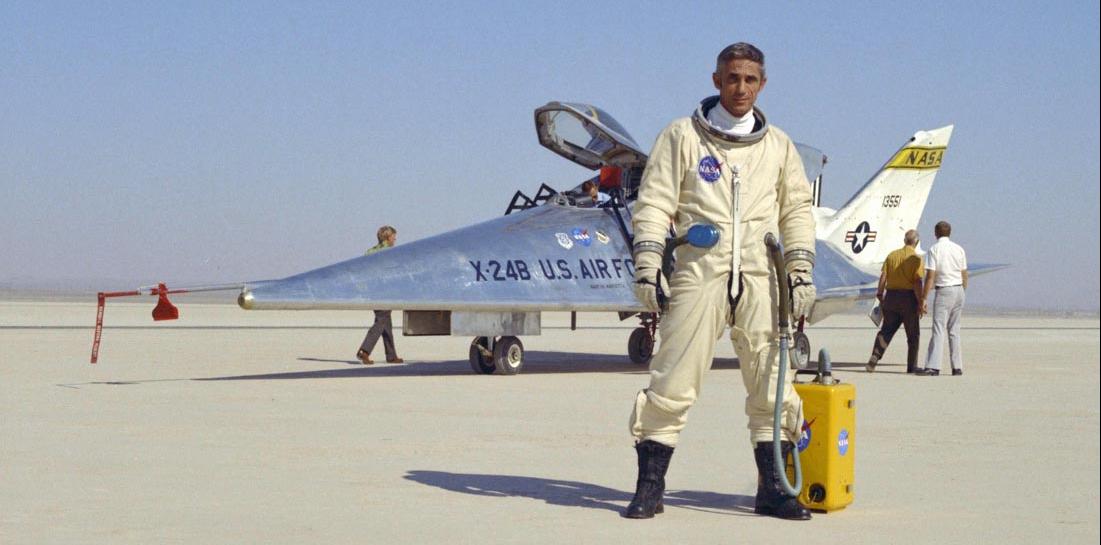 |
||
John Manke on the dry lakebed at Edwards AFB after a rocket plane flight in the X-24B on 5 Aug. 1975. Armstrong Flight Research Center |
||
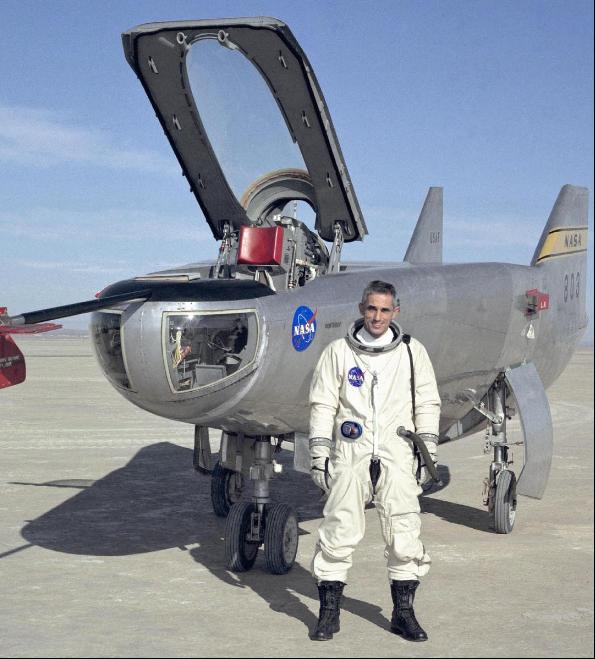 |
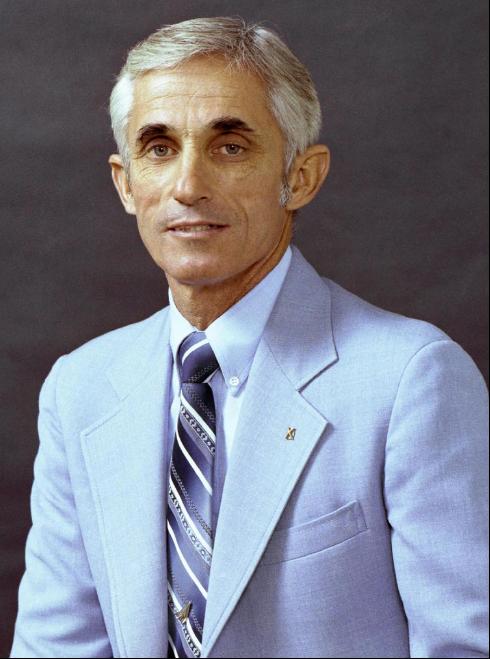 |
|||
Manke after an M2-F3 research flight on 20 Dec. 1972. Armstrong Flight Research Center |
Official NASA portrait of John A. Manke. Armstrong Flight Research Center |
|||
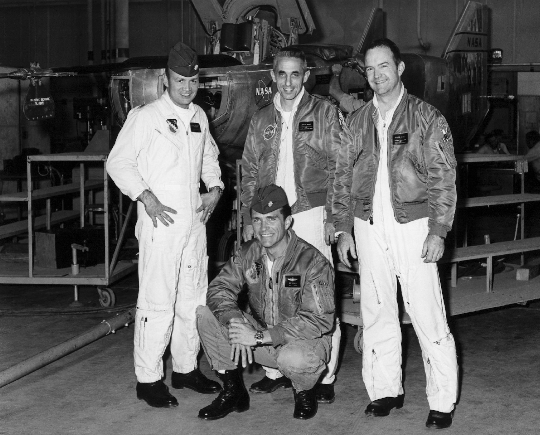 |
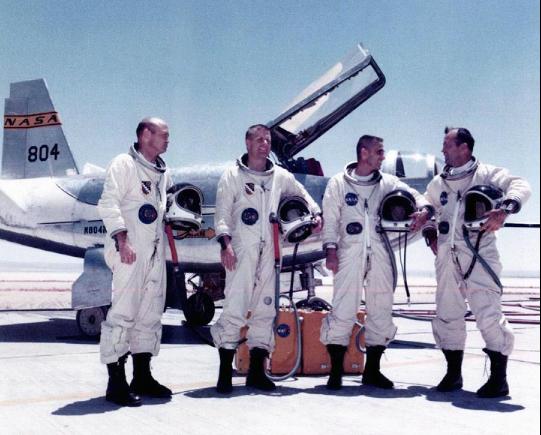 |
|||
Seen in 1971 in front of the M2-F3 lifting body are pilots (L-R) Gerry Gentry, John Manke, Bill Dana, and (kneeling) Cecil Powell. Armstrong Flight Research Center |
Four lifting body pilots on the Rogers lakebed in front of the HL-10. Gerry Gentry, Peter Hoag, John Manke, and Bill Dana. Armstrong Flight Research Center |
|||
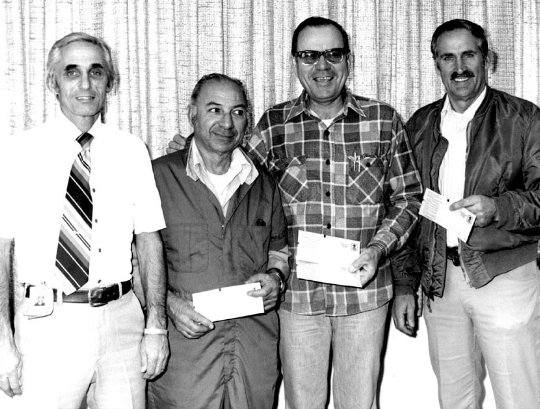 |
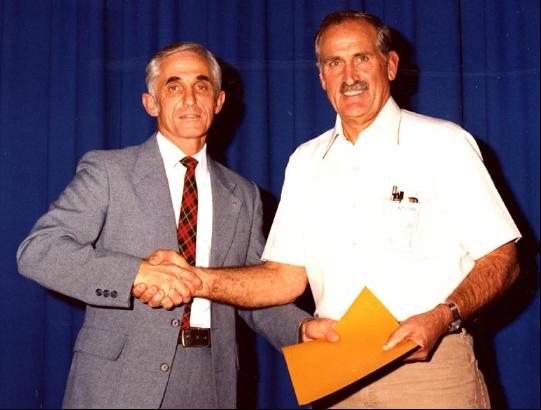 |
|||
John was the go-to guy when NASA handed out awards to employees at the Flight Reseach Center. In the photo at left, three NASA employees receive awards and checks for suggestions. At the right side of that photo is Dave Stoddard, an Aerospace Engineering Technician from the X-15 Rocket Shop. In the right photo, Dave again receives an award from John, this time for Exceptional Service to NASA. Dave Stoddard collection |
||
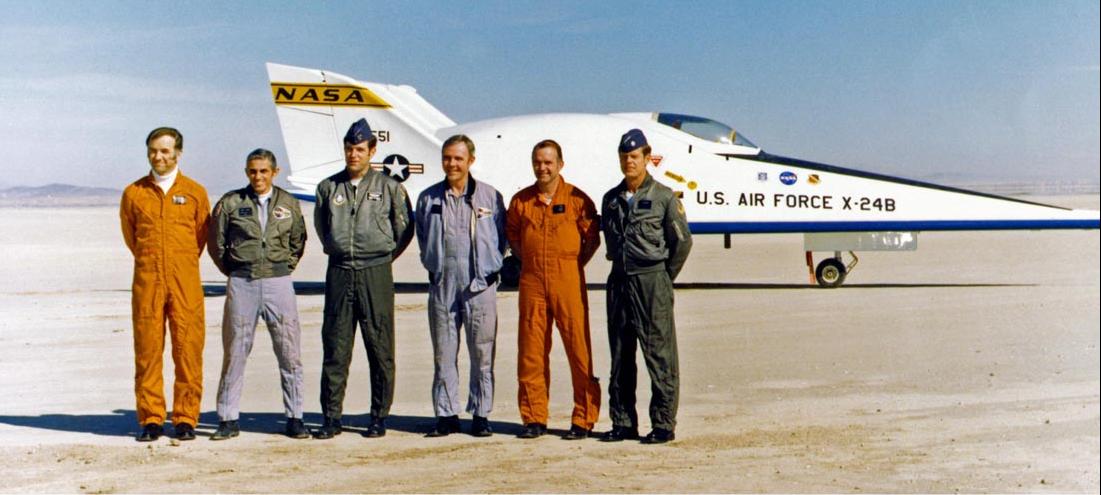 |
||
A lineup of research pilots at the NASA Dryden Flight Research Center in 1976 standing in front of the last rocket plane, the X-24B. (from L-R) Einar Enevoldson, John Manke, Richard Scobee, Tom McMurtry, Bill Dana, and Michael Love. Scobee perished on 28 Jan. 1986 aboard the Space Shuttle Challenger, just 73 seconds into mission STS-51L. Michael Love died soon after this photo was taken during an emergency landing of an RF-4C on 1 Mar. 1976. Armstrong Flight Research Center |
||